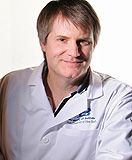News
Behavioral IDs can help stop terrorists
The effective use of multiple layers of intelligence gathering, including existing behavioral identification programs, could have excluded Farouk Abdul Mutallab from travel before he got anywhere near Northwest Flight 253.
So says UB behavioral scientist and security researcher Mark G. Frank, who explains that although Mutallab got through some security levels, “Behavioral science techniques could have detected him once he got to the airport.”
“There have been many scientific advances in technology, coupled with understanding such people and their behavior—and programs exist that put that into action to help identify them,” says Frank, associate professor of communication in the College of Arts and Sciences. “Unfortunately, they are not being used widely enough.”
Frank, who has advised on the Department of Homeland Security on behavioral identification programs, agrees with security experts who maintain that security is best achieved in a layered approach to the examination of would-be airline passengers.
“No single security technique on its own is a panacea, although that would be great,” he says. “But no technique need be 100 percent accurate to be deployed effectively. Each imperfect layer complements the next because the goals of security screening are actually more modest than people assume.
“The goals are, first, to employ intelligence and investigatory processes to dissuade or disrupt a would-be terrorist from traveling at all,” he says.
If a suspected terrorist gets through the first layer of security and travels anyway, Frank says, then the goal is to force him or her into a group marked for intense secondary screening.
“At this point,” Frank says, “there exist excellent scientific techniques to spot such suspects, and they don’t employ ethnic screening or the random screening of passengers, processes that are not effective and to which Americans object.
“We ignore these scientific techniques at our peril,” he says.
Frank points out that multiple layers of security each have strengths and weaknesses, and any layer is able under some circumstances to identify a terrorist, “So it is necessary to put resources into each layer.”
One such layer uses effective behavioral techniques and includes the Department of Homeland Security’s SPOT and FAST programs.
“Both of these are observational systems with strong scientific foundations that are effective in identifying suspicious behaviors and strongly increase the odds that a would-be terrorist would be forced into yet another level of scrutiny.”
Frank, an original member of the FBI’s Terrorism Research and Analysis Project (TRAP) combining academic researchers with counter-terrorism professionals, serves as a consultant to the Department of Homeland Security for the SPOT and FAST programs.
“SPOT (Screening of Passengers by Observation Technique),” he says, “is a behavioral-observation technique employed by the Transportation Security Administration. It is based upon a successful Israeli program derived from that country’s direct experiences with terrorists and current behavioral science.
“FAST—an acronym for Future Attribute Screening Technology—is a sensor-based program currently in development that reads body reactions indicative of hostile intention and uses these to develop stronger algorithmic predictions as to whom should be sent on to additional screening.
“Both programs should be applauded for seeking the strong, direct involvement of scientists and both have benefited accordingly. Appropriately utilized, I believe they would have permitted us to spot the Northwest Airlines terrorist,” he says.
“The immutable fact is that any effective international terrorist-security system must address myriad psychological, social and political issues,” Frank says.
“The cause of terrorism and its cures are very complex and require a multi-layered and multi-pronged approach,” he says, “but I want to emphasize that we already have many of the technologies and techniques—with more to come—vetted by scientific research, to better identify and stop these people all along the way.”


Reader Comments